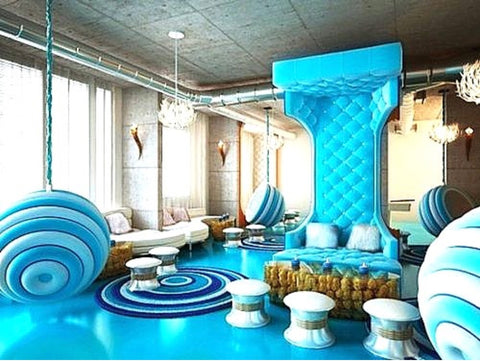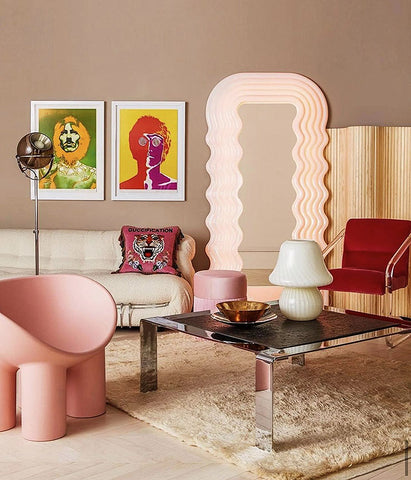When a Minimalist Meets a Maximalist: A Style Guide For Mixing The Looks
Team minimalist or team maximalist? Trick question - you don't have to choose! Whether you're a maximalist or minimalist at heart, you can incorporate both styles in your home.
You can mix and match styles to create an interesting look, rather than sticking to one style from floor to ceiling. Read on to find out how and check out the photos for inspiration!
What is Minimalism?
Minimalism is a design aesthetic that emphasizes simplicity and negative space.

Minimalist design is often associated with clean lines, uncluttered surfaces, neutral color tones, and pared-back ornamentation.

While minimalist design has been around for centuries, it gained popularity in the mid-20th century in response to the over-the-top designs of the Art Deco period.

Minimalism has since remained a popular aesthetic, although it has undergone some changes over the years and often overlaps with modern and postmodern aesthetics reminiscent of space-agey futuristic design.

What is Maximalism?
Maximalism is a design style that is characterized by devotion to decoration and embellishment. It is the polar opposite of minimalism, which is defined by its simplicity and lack of adornment.

While minimalism seeks to strip away all superfluous elements, maximalism embraces excess in all forms.

Rather than clean lines, we see more ornate accents. Color, texture, and sheen are mixed and matched, adding further to the variety of style in a maximalist space.

Maximalism can be applied to any design element, from architecture to fashion to interior design. In recent years, it has experienced a resurgence in popularity, as more and more people are pushing back against the starkness and austerity of minimalism. Maximalism intersects with vintage, Victorian, retro, and art deco styles.

If you're looking to make a bold statement with your design, maximalism is the way to go.

However, it's important to avoid going overboard – too much of anything can be a bad thing! When used sparingly and tastefully, maximalism can add an element of luxury and opulence to any space.
Why Not Both? How to Mix Minimalism and Maximalism
First, start by considering the overall feel of the space. If it leans more towards minimalist, then focus on adding in maximalist accents – think a statement piece of furniture or an eye-catching light fixture.

On the other hand, if your room has a more maximalist vibe, then ground it with some minimalist elements like crisp white walls, simple window treatments, and rounded simple lines.

Once you have a good foundation in place, you can start mixing and matching different pieces to create a look that is unique to your space. Just be sure to keep the overall feel and color palate of the room in mind so that everything comes together seamlessly in the end.

Here are a few more tips:
1. Start with a neutral base. This will help anchor the space and make it feel more cohesive. From there, you can add in pops of color and pattern with your furnishings and accessories.

2. Incorporate both light and dark elements. A good mix of light and dark colors will add visual interest and depth to the space.

3. Layer different textures. This will add dimension and make the space feel more inviting. Mixing different textures also helps to break up any monotony that can occur when using two similar styles.

4. Add in personal touches. This can be anything from family photos to art pieces that you love to plants. These items will help inject some personality into the space and make it feel like home.

Some of our favorite home decor picks for a minimalist touch:
French Boucle White Curved Sofa
Wavy Black Glass Candlestick Holders
Some of our favorite home decor picks for a maximalist touch:
Burnt Orange Mid-Century Sectional Sofa
Floral Print Victorian Lampshade with Beaded Tassels










Leave a comment